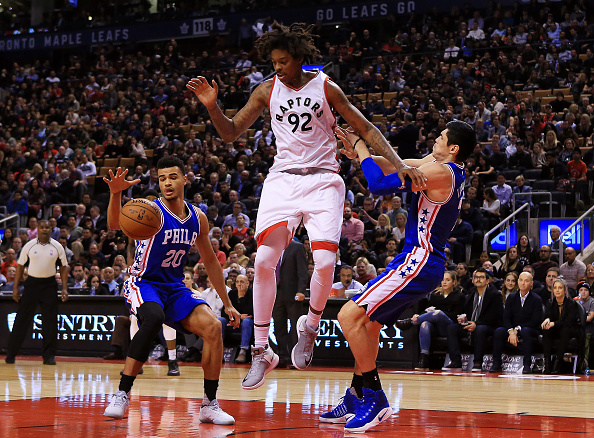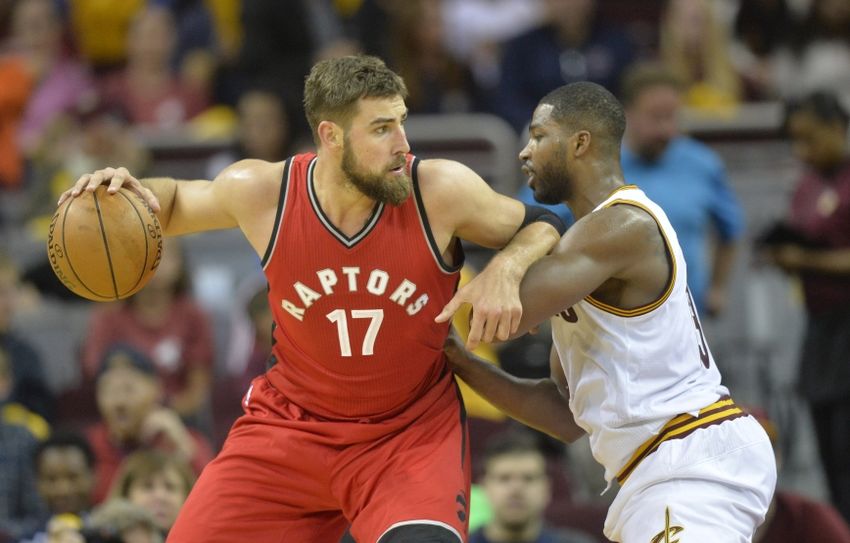According to NBA.com/Stats, the Raptors are now tied with Golden State for the league’s top offense at 114.2 points per 100 possessions, making them a near unstoppable force that moves at a below average pace.
Toronto just slowly grinds on teams, and is doing so at an elite level of efficiency. Despite it not being the most aesthetically pleasing to watch, absolutely no complaints can be made about how the Raptors score the ball.
The complaining though can certainly be focused on the other end of the court, whether the Raptors have (to put it kindly) struggled a little. Despite being a near average team in defending, Toronto is well below where they need to be to compete with the top teams. There will eventually come nights where they simply can’t score at their normal pace (see the first half against Boston last week), and will need their defense to keep them in a game.
Let’s start with opponent three point shooting, as this has felt like a particular area of weakness for Toronto. To date though, the Raptors are allowing a very average 35.2 percent from three (16th best in the league), while allowing the seventh highest number of three point attempts per game (10.1). Rather than the percentages, it is the frequency that is hurting them.
Their opponent three point attempt numbers have risen even higher over their last 10 games (11.4), good for fourth worst in the league over this period. They have also allowed their opponent to shoot a slightly improved 36.4 percent from long range, 12th highest in the league.
As they’ve allowed more three point attempts and a higher three point percentage over the last 10 games, the Raptors have also ranked 13th in defensive rating during this time, allowing 103.8 points per 100 possessions.
Although that number is still not good, it’s an improvement from the 104.9 defensive rating (18th in the NBA) the Raptors had through their first 13 games. Over a small sample size (10 games) Toronto is managing to improve their overall defensive rating, while allowing opponents to attempt more threes and hit them at a higher percentage.
With the increased focus of NBA teams to stretch the floor from long range, it seems counterintuitive that the Raptors are steadily improving their defense while opponents shoot more threes at a higher than league average rate. And this has happened despite playing some of the top three point shooting teams in the NBA (Cleveland, Houston, LA Clippers, and Philadelphia are all top 10 in both three point attempts and three point percentage, with Boston being top five for attempts and 12th for percentage).
So where has Toronto’s slow defensive improvement come from?

Since November 21st the Raptors have shown significant improvement in two key areas: fast break points and points allowed in the paint. The Raptors have clearly made it a focus to prevent transition and fast break buckets (their slow pace and high free throw rate helps this) and to try and prevent opportunities in the paint.
Looking back at the chart, if Toronto can limit opponent’s second chance points they will be well situated to make a push towards a top 10 defense. Toronto currently has a paltry defensive rebounding percentage of 74.4 percent, fourth worst in the NBA.
While I have concerns about how Jared Sullinger will impact other areas of the defense, adding an elite defensive rebounder to the starting line-up could help to shore up this specific area of concern
All of these elements helps to build a picture of the Raptors defense, but none of it (even collectively) can show it all. Defense is nuanced and complicated, but at least we are starting to see some improvement and renewed focus in a few key areas as of late.
*all stats are from prior to Sunday’s scheduled games.



